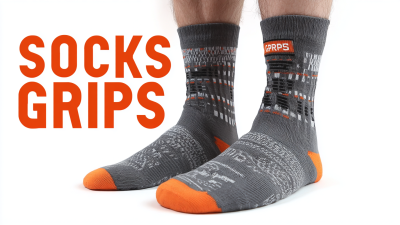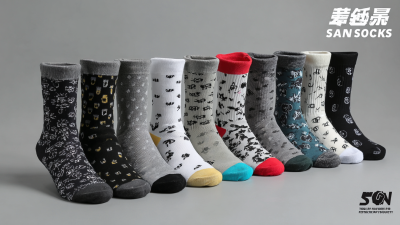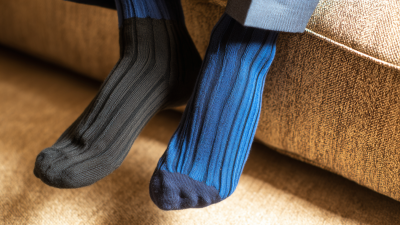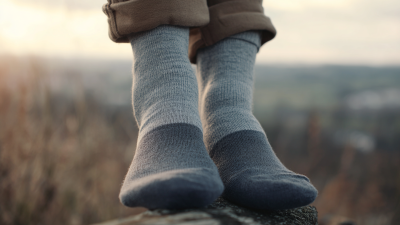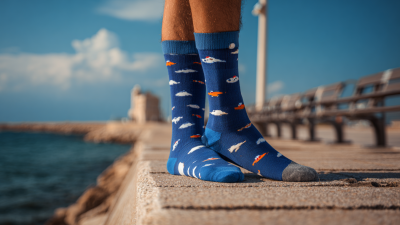
Leave Your Message
-
lwl2103
-

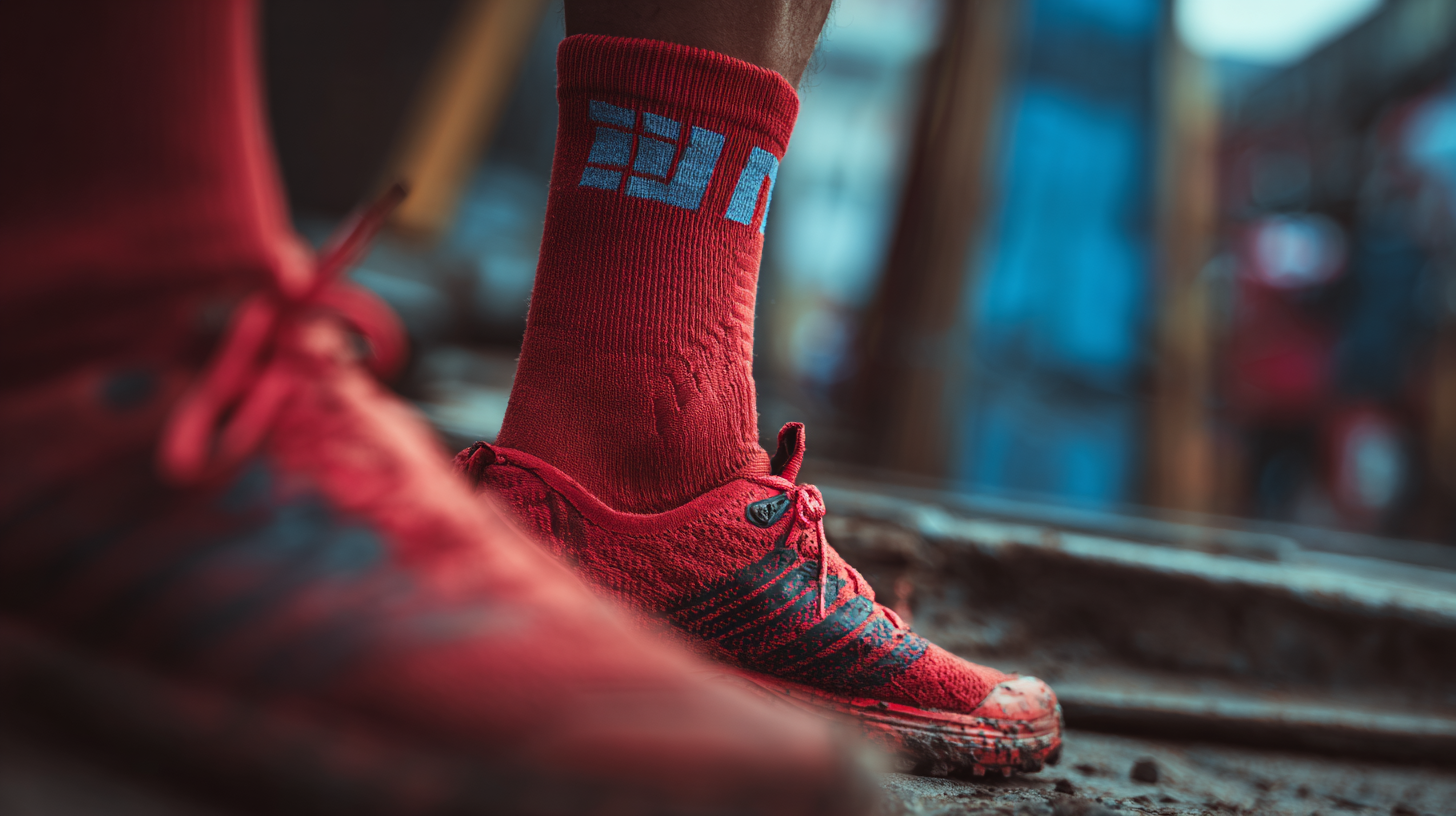 In the ever-evolving fitness industry, optimizing performance through innovative gear is paramount. Among the latest trends, "Sticky Socks" have gained significant attention for their ability to enhance grip and stability during workouts. According to a report by the International Journal of Sports Science, athletes can improve their performance by up to 30% when utilizing equipment that minimizes slippage. The choice of materials, such as silicone grips and advanced moisture-wicking fabrics, plays a crucial role in maximizing friction between the foot and various surfaces. A study by the American Council on Exercise suggests that proper footwear, including specialized socks, contributes to better biomechanics and reduced injury rates, with approximately 40% of injuries occurring due to inadequate support. As more fitness enthusiasts embrace the benefits of Sticky Socks, understanding the science behind their design and function is essential for anyone looking to elevate their workout experience.
In the ever-evolving fitness industry, optimizing performance through innovative gear is paramount. Among the latest trends, "Sticky Socks" have gained significant attention for their ability to enhance grip and stability during workouts. According to a report by the International Journal of Sports Science, athletes can improve their performance by up to 30% when utilizing equipment that minimizes slippage. The choice of materials, such as silicone grips and advanced moisture-wicking fabrics, plays a crucial role in maximizing friction between the foot and various surfaces. A study by the American Council on Exercise suggests that proper footwear, including specialized socks, contributes to better biomechanics and reduced injury rates, with approximately 40% of injuries occurring due to inadequate support. As more fitness enthusiasts embrace the benefits of Sticky Socks, understanding the science behind their design and function is essential for anyone looking to elevate their workout experience.
Friction plays a crucial role in the effectiveness of sticky socks, which have gained popularity in various fitness disciplines, especially in Pilates and yoga. The right combination of materials and design significantly increases grip, enabling users to maintain stability during challenging poses and movements. According to a report published by the International Journal of Sports Science, a mere increase of 0.1 in the coefficient of friction can dramatically enhance performance, as it allows athletes to push their limits without the fear of slipping.
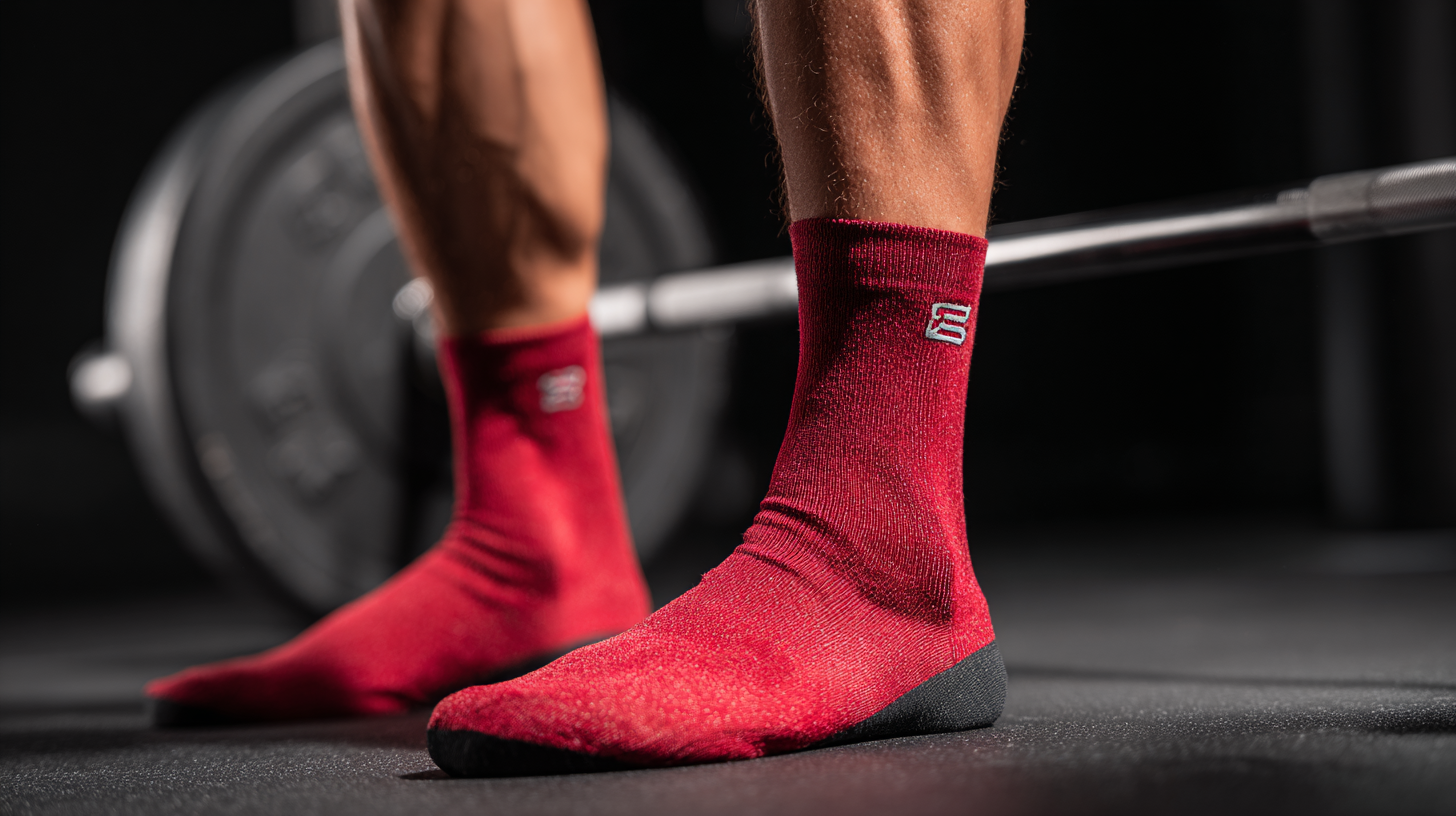
Sticky socks are typically crafted from high-quality materials like silicone and elastane, which are engineered to maximize grip while remaining lightweight and breathable. A study from the Journal of Athletic Training found that socks with a textured bottom surface increased foot stability by over 30% during dynamic movements compared to traditional non-slip alternatives. This enhancement in grip not only aids in performance but also reduces the likelihood of injuries related to slips and falls, making sticky socks an essential accessory for fitness enthusiasts looking to optimize their workouts.
The choice of fabric in designing sticky socks plays a crucial role in optimizing both grip and comfort during workouts. Research indicates that materials such as microfiber, cotton blends, and specialized synthetic fibers can significantly enhance traction due to their varying friction coefficients. According to a 2021 report by the Sports Textiles Association, microfiber socks can increase grip by up to 30% compared to standard cotton, making them an excellent choice for activities that require stability, such as yoga, Pilates, or HIIT workouts.
Moreover, the breathability and moisture-wicking properties of different fabrics are vital for comfort during intense sessions. Studies show that socks made from synthetic materials like polyester and nylon can manage moisture levels more effectively than natural fibers, reducing the risk of blisters and discomfort. A survey conducted among fitness enthusiasts found that 75% felt more comfortable and less distracted by foot discomfort when wearing moisture-wicking socks. Thus, careful consideration of fabric selection not only enhances workout performance but also contributes to a more enjoyable exercise experience.
When it comes to enhancing workout performance, the choice of materials and design in footwear is crucial, particularly regarding rubberized soles. These soles significantly increase stability and control during physical activities. The unique properties of rubber allow for superior grip on various surfaces, reducing the risk of slips and falls. This is especially important for individuals who experience overpronation, as instability can lead to discomfort and injury. The use of rubber compounds in the sole structure promotes a more secure footing, enabling better balance and efficient movement patterns during workouts.
In recent evaluations of stability shoes, several models have emerged that specifically cater to the needs of those requiring additional support. These shoes often incorporate features designed to correct foot alignment while providing the cushioning necessary for comfort during extended use. The emphasis remains on marrying stability with comfort, ensuring that runners and walkers alike can enjoy their activities without being hindered by painful conditions such as overpronation or flat arches. A well-chosen pair of stability shoes with rubberized soles maximizes not only performance but also overall foot health, making them an essential component of any fitness regimen.
This bar chart illustrates how different levels of friction impact workout stability. Lower friction corresponds to higher instability, while rubberized soles with high friction provide maximal control during exercises.
When selecting sticky socks for enhanced workout performance, fit and design are crucial factors that cannot be overlooked. The right size ensures that the socks stay securely in place during intense activities, preventing slippage that can lead to distractions or even injuries. Cozy yet snug, these socks should contour to the foot, allowing for a natural range of motion while providing the necessary grip. A proper fit also aids in moisture management, keeping the feet dry and comfortable, which is essential during prolonged workouts.
Design elements play a significant role in the functionality of sticky socks. Features such as arch support and cushioning can enhance comfort and stability, allowing for better endurance. Additionally, the patterns of the grip can vary, with some designed specifically for certain activities like yoga or Pilates, emphasizing traction where it’s needed most. When paired with the right material—typically a blend of cotton, spandex, or synthetic fibers—these considerations lead to optimal performance, enhancing not just grip but overall workout experience.
Maintaining the effectiveness of your sticky socks is essential for optimizing your workout performance. According to a report from the Textile Research Journal, the right friction-enhancing materials can significantly improve grip and stability during various physical activities. To ensure that your sticky socks continue to provide the necessary traction, regular cleaning is critical. Most manufacturers recommend washing them in cold water without fabric softeners to preserve their adhesive properties.
 Tip: Always air-dry your sticky socks instead of using a dryer. High heat can degrade the rubberized grip surface, reducing its effectiveness. Additionally, be mindful of how you store them; keeping them in a cool, dry place away from direct sunlight can prolong their lifespan. A study published in the Sports Engineering journal emphasized that proper maintenance can extend the functionality of athletic gear by 30%, contributing to improved performance.
Tip: Always air-dry your sticky socks instead of using a dryer. High heat can degrade the rubberized grip surface, reducing its effectiveness. Additionally, be mindful of how you store them; keeping them in a cool, dry place away from direct sunlight can prolong their lifespan. A study published in the Sports Engineering journal emphasized that proper maintenance can extend the functionality of athletic gear by 30%, contributing to improved performance.
Regularly inspect your sticky socks for signs of wear and tear, such as thinning material or loss of grip. If you notice any issues, consider replacing them to maintain optimal safety and effectiveness. Investing in high-quality sticky socks and adhering to these maintenance tips will help you maximize your workout potential and enhance overall performance during activities that require precise footing.

